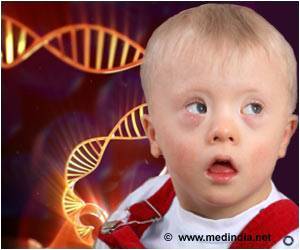\The ribosome is an important part of molecular biology as it contains the machinery necessary to assemble proteins, the building blocks of life.

But in recent years, it has been demonstrated that the ribosome is far more than just a processing unit; indeed, current research points to an important role for this complex structure in actively regulating biological processes.
Now, in a first-of-its-kind study that broadly examines the composition of the riboproteome, a scientific team led by investigators at Beth Israel Deaconess Medical Center (BIDMC) reveals previously unappreciated components of the ribosome, uncovering a large and dynamic structure that, among other things, can be altered in cancer. Published in today's on-line issue of the journal Cell Reports, the study additionally describes the development of an analytic platform that can be widely applied to numerous biological systems to highlight the functional roles of possible disease genes associated with the riboproteome.
"A primary goal of our lab is to gain a better understanding of translation and its impact on cancer," explains senior author Pier Paolo Pandolfi, MD, PhD, Scientific Director of the Cancer Center at BIDMC and George C. Reisman Professor of Medicine at Harvard Medical School (HMS). "So a key focus of our work has been the role of the ribosome. While the conventional wisdom has been that ribosome composition is absolutely fixed, we have recently pursued the hypothesis that it is, in fact, flexible and dynamic. Moreover, it has become apparent during the course of our investigations that the functional deregulation of the ribosome is implicated in disease initiation and progression, and could serve as a potential target for therapeutic intervention."
In this new study, a scientific team led by Pandolfi lab members John Clohessy, PhD, and Markus Reschke, PhD, examined the ribosome on a large scale to get a clearer picture of the relationship and interactions between ribosomes and the associated proteins required for efficient and correct translation of messenger RNA (mRNA).
"We wanted to find out what was happening in the ribosome on a global scale," explains Clohessy. "So we incorporated into our analysis those proteins that associate with either the ribosome itself or with the mRNA being translated, and which could represent important regulators of translation."
An acronym for stable isotopic labeling by amino acids in cell culture, SILAC utilizes non-radioactive isotope labeling to detect quantitative differences in protein abundance among cell samples. "A SILAC-based approach offers an elegant way of comparing two different cellular populations," explains Reschke. "The metabolic incorporation into the proteins of amino acids that have been differentially labeled with carbon and nitrogen isotopes results in a mass shift of the corresponding peptides, and it is this shift that can be detected by a mass spectrometer.
Using a panel of cell lines, as well as genetic and pharmacological perturbations, the team embarked on their characterization of the prostate riboproteome. "Mass spectrometry enabled us to look at thousands of proteins at the same time," explains Clohessy. Through SILAC-based mass spec, the investigators were able to gain the first comprehensive overview of proteins within this space and examine how the riboproteome is altered in disease.
"We compared a number of different things," adds Clohessy. "We compared different cancer cell lines. We looked at changes to the riboproteome within a single specific cell line, both with and without use of a pharmacological inhibitor. And, we looked at a cell line in the context of genetic alteration. We essentially got a clear snapshot of which proteins were in this space at any particular time, and saw how they responded to cellular signals and stresses."
The authors then carried out a computational analysis on this extensive dataset to determine if there were specific protein networks or pathways that were highly represented in the data. Their survey revealed a number of exciting and surprising findings – with important therapeutic implications.
"Among other things, our analysis uncovered a high incidence of genetic alterations to the riboproteome components in cancer, with a distinct bias towards genetic amplification, [whereby cells accumulate multiple copies of genes which can support cancer growth and survival]" explains Reschke, adding that it also revealed the presence of a significant population of RNA binding proteins (RBPs), important regulators of mRNA translation, some of which are also associated with disease.
"Changes in ribosome amounts have been shown to be associated with cancer for more than a century," notes Nahum Sonenberg, PhD, James McGill Professor of Biochemistry at McGill University. "However, the mechanism that links ribosomes and cancer is not well understood. This paper from the Pandolfi laboratory is a very important step towards the understanding of the full gamut of functions of the ribosome and its associated translation mRNA machinery in cancer."
This novel method additionally opens up a new direction in terms of how to study the ribosome in the context of both disease and therapy. "By now, we know a lot about the genes and pathways that converge on translation, and many of them are well-known oncogenes, including MYC and PI3K," explains Pandolfi. 'But the translational dimension we are now describing offers a new perspective on yet another layer of proteins that seem to be amplified in cancer. These findings provide us with a completely new set of proteins that may be used to better understand the process of translation in cancer, and help identify new targets for therapeutic intervention."
Source-Eurekalert
 MEDINDIA
MEDINDIA



 Email
Email




